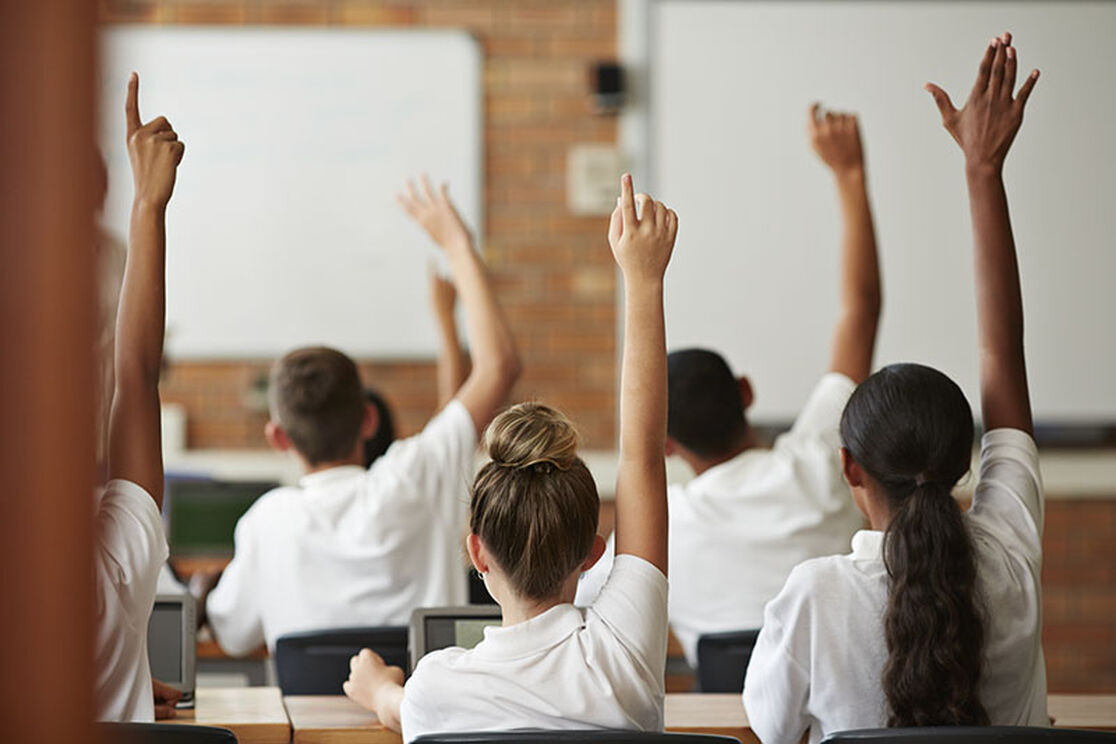We send our kids off to school to learn the ABCs, but new research shows it could be exposing millions of them to toxic PCBs – chemicals that were banned over 40 years ago. Polychlorinated biphenyls (PCBs) are a group of persistent chemicals that are known or suspected to cause a wide range of health effects (1). They are considered probable human carcinogens and can have significant toxic impacts on the immune system, the reproductive system, the nervous system, and the endocrine system (1). Similar to the toxic legacy that lead in paint has left behind, PCBs can still be found in old caulking, electrical wiring, and light ballasts (among other things) that are in older schools across the nation. Not only do these sources contain PCBs that could be released during renovations, they’ve also been degrading over time and now PCBs show up in the air, dust, and soil at schools.
For schools built before the ban in 1979, PCB pollution is a significant problem. And the push to identify these schools and eliminate the PCB contamination has been less than satisfactory. In fact, PCBs continue to contaminate classrooms in thousands of schools nationwide. According to Harvard researchers, between 13,000 and 26,000 schools are still contaminated with them which means that up to 14 million students could be affected every day.
A recent report released by US Sen. Edward Markey of Massachusetts illuminates the troubling reality of PCB contamination in our nation’s schools. The report shows that PCBs in schools are a national problem, says Harvard School of Public Health’s Dr. Robert Herrick, a primary author of the study. And while a lack of federally-sanctioned regulation makes it hard to grasp the scope of this problem, “it is clear that where people look for PCBs in schools, they are very likely to find them.”
The report states:
“Decades after the PCB ban, people are still being exposed to these toxic chemicals from various sources...Most worrisome are PCB exposures for children in schools built or retrofitted during the period that PCB-containing materials were widely used. Up to 14 million students nationwide, representing nearly 30 percent of the school-aged population, may be exposed to PCBs in their schools, based on the estimated number of schools built during that time and how much PCB-containing material was used in these schools.”
Why all the estimations, you may ask? The answer is simple: There’s a severe lack of government regulation. It’s impossible to know how many kids are exposed to these chemicals each and every day, because schools aren’t required to test for PCBs and, according to the report, “even when potential exposures are identified, the manner in which reporting, communication and remediation of the hazard occurs is inconsistent and often ineffective.”
The good news.
Activists, environmental experts, and health professionals nationwide are lobbying Congress to mandate testing for PCBs in schools. Model Cindy Crawford has become a spokeswoman for the cause after pulling her own children out of school after PCBs were found. “This isn’t my normal day job, but it just didn’t make sense to me, and it didn’t seem fair,” Crawford told reporters recently. “My children are being homeschooled, but that is not an option for most people.”
The goal of this coalition is to amp up federal requirements surrounding PCB testing and reporting in order to reduce kids’ exposure to this toxic chemical as much as possible. The argument is that current policies leave plenty of room for dangerous loopholes. For example, while the EPA has received 286 reports of PCBs in schools across 20 states in just the last decade, nobody is required to make any effort to remove the chemicals. And the legal limit for PCBs exposure is hard to regulate when schools aren’t required to test for PCBs in the first place. Says Melanie Benesh, a legislative attorney for the Environmental Working Group, “There needs to be a duty to look for PCBs just like there is a duty to look for asbestos.”
What can you do to protect your child?
- If your school was built before the ban, ask if they’ve tested. If so, ask for results. If not, ask them to.
- If PCBs are a concern, make sure your child’s school is following the practical actions outlined by the EPA. They have a fact sheet detailing steps for making building updates. They also recommend following the best management practices (BMPs) listed below on a frequent ongoing basis to minimize potential exposures to PCBs:
- Ensure that ventilation systems are operating properly and are regularly inspected and maintained. If system cleaning is needed, follow ANSI/ACCA Standard 6 – Restoring the Cleanliness of HVAC Systems (2007).
- Clean inside schools and other buildings frequently to reduce dust and residue. Use a wet or damp cloth or mop to clean surfaces.
- Use vacuums with high efficiency particulate air (HEPA) filters.
- Wash hands with soap and water, particularly before eating.
- Clean children’s toys.
- Let your representatives in Congress know you want the appropriate regulations and protocols put in place to protect our children.
~Christopher Gavigan
References:
- Herrick, R. F., Mcclean, M. D., Meeker, J. D., Baxter, L. K., & Weymouth, G. A. (2004, 03). An Unrecognized Source of PCB Contamination in Schools and Other Buildings. Environ Health Perspect Environmental Health Perspectives, 112(10), 1051-1053. doi:10.1289/ehp.6912
We aim to provide you with the most honest and credible information possible. This article was reviewed for accuracy by The Honest Team and was written based on sources that are linked at the bottom of the article.
blog_review_statement



